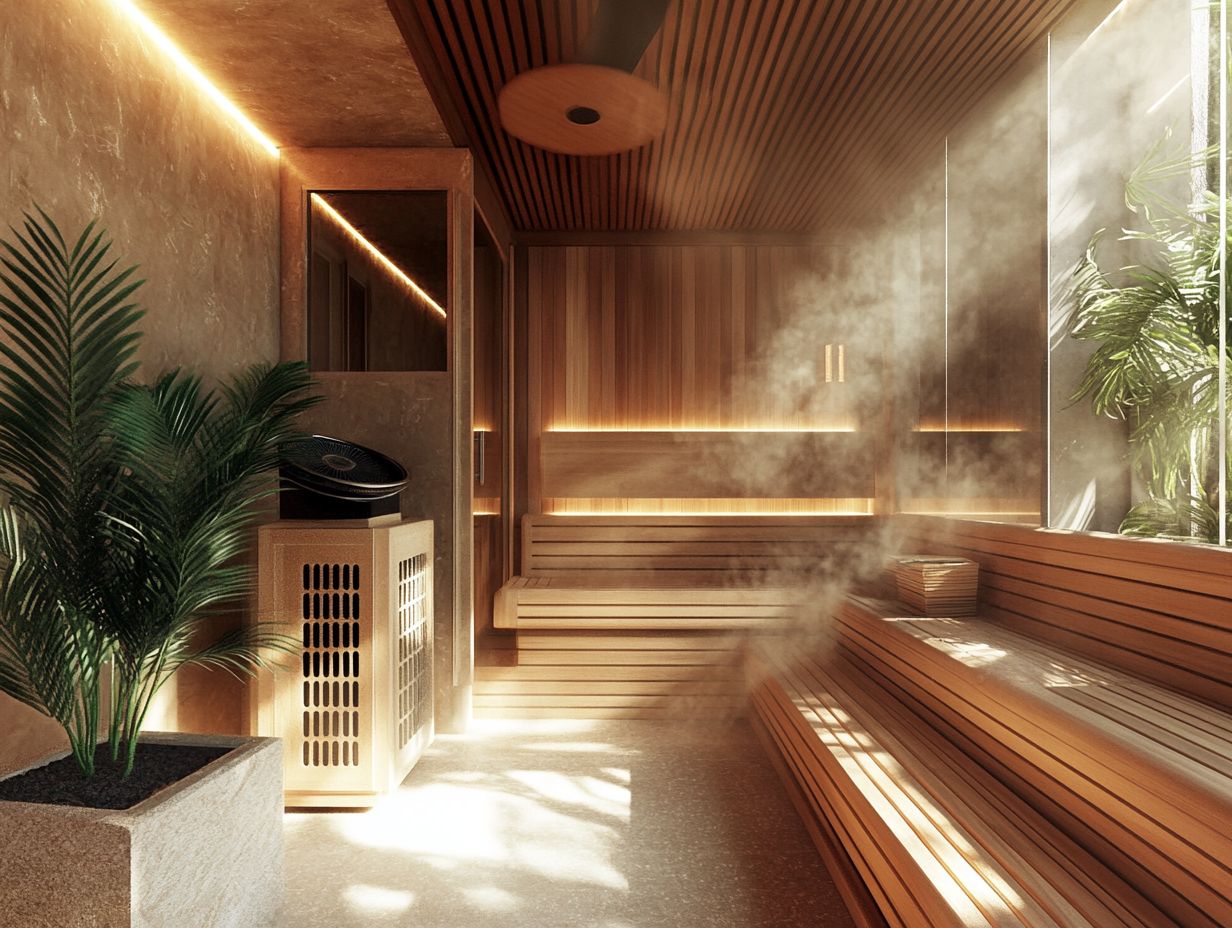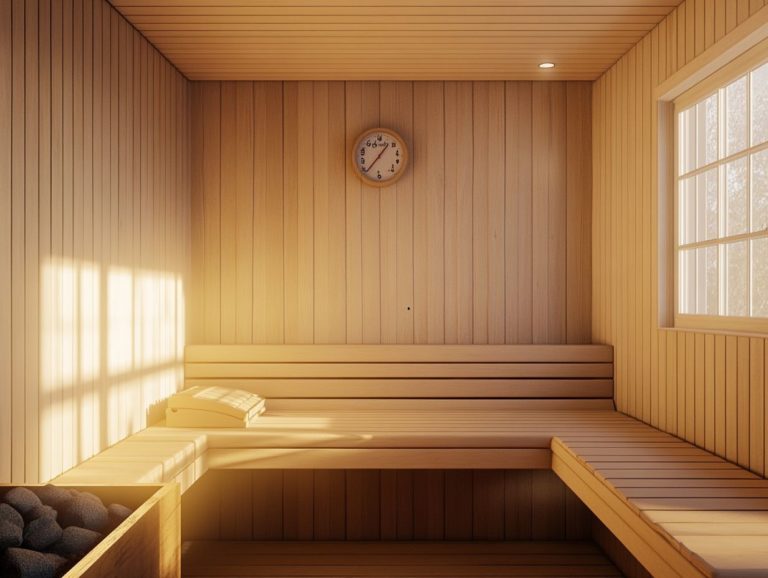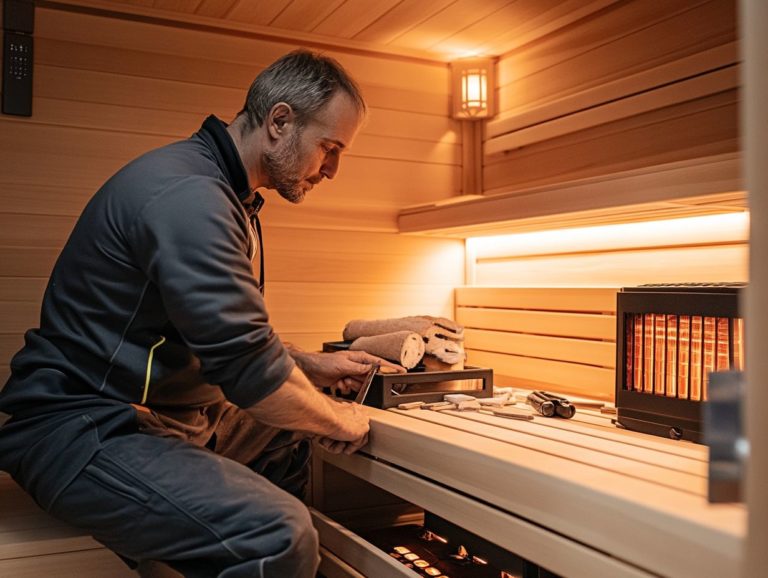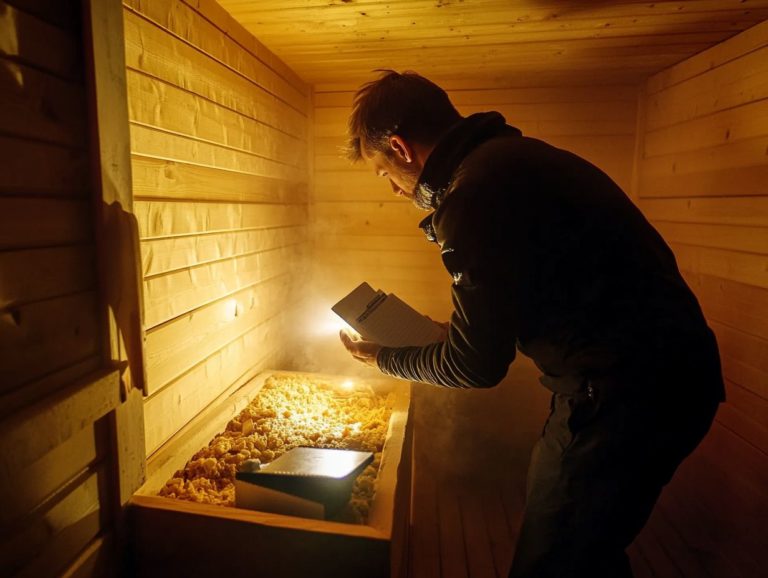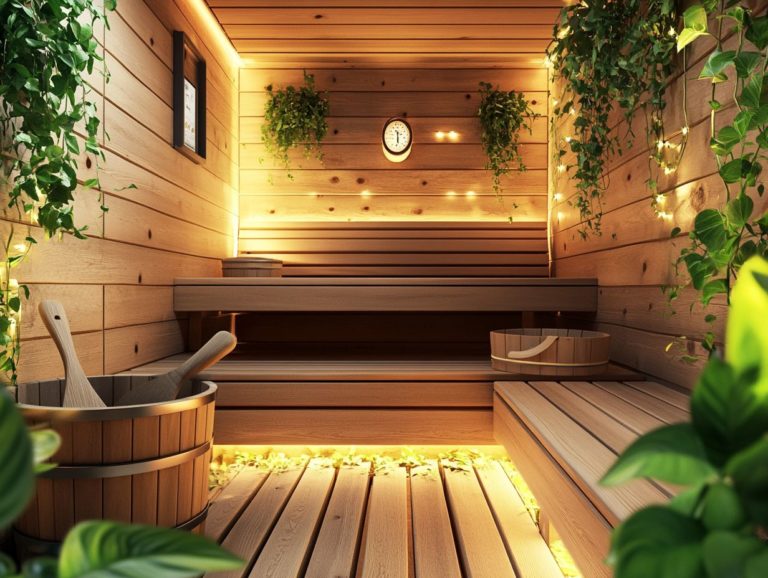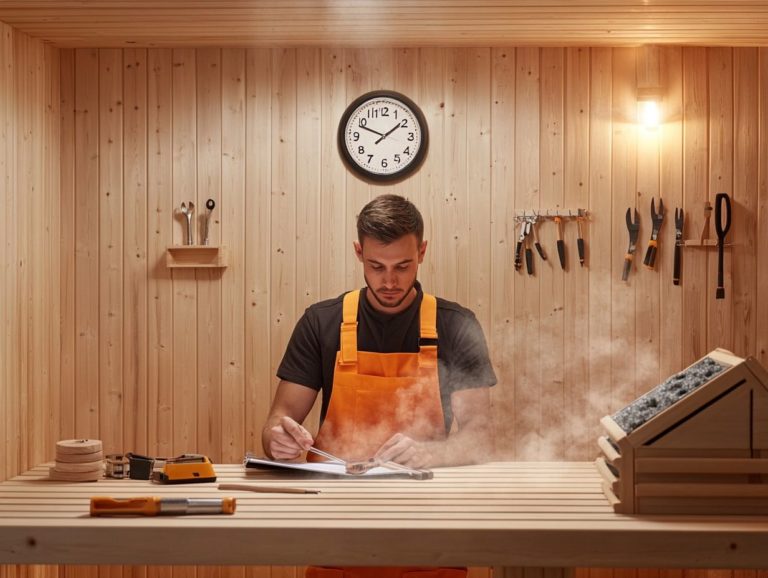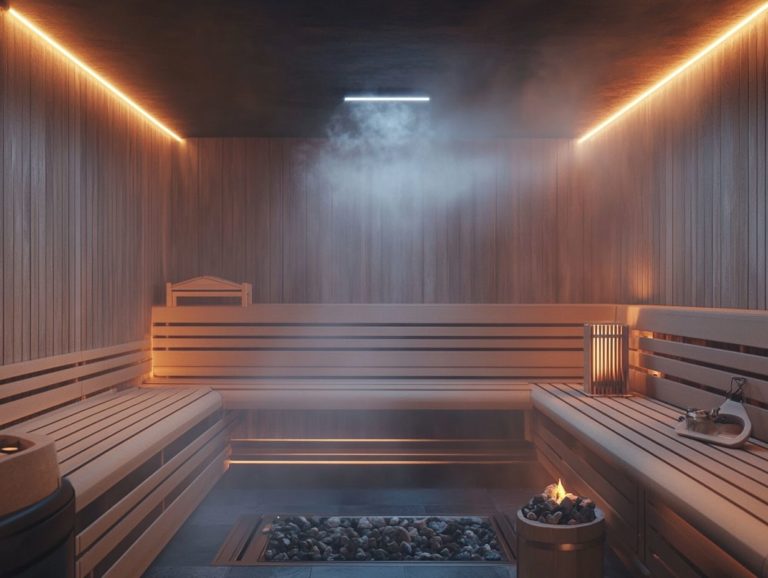How to Maintain Your Sauna’s Air Quality
When you seek to fully enjoy the benefits of your sauna, the quality of the air within plays a vital role in enhancing your overall sauna experience.
Compromised air quality not only detracts from the soothing experience but can also present health risks you d rather avoid, affecting your health benefits.
This article delves into the various factors that influence air quality in saunas, emphasizing the importance of maintaining a clean sauna environment. Get ready to discover practical tips that will transform your sauna into a tranquil oasis!
From regular cleaning techniques to effective ventilation and the use of natural products, we cover everything you need to know to elevate your sauna experience.
Contents
- Key Takeaways:
- Understanding Sauna Air Quality
- The Importance of Good Air Quality
- Tips for Maintaining Sauna Air Quality
- Common Issues and Solutions
- Frequently Asked Questions
- How often should I clean my sauna to maintain air quality?
- What is the best way to clean my sauna for optimal air quality?
- Can I use scented oils or fragrances in my sauna for a better smell?
- How can I prevent mold and mildew from forming in my sauna?
- Is it necessary to have a ventilation system in my sauna?
- Can I use air purifiers in my sauna to improve air quality?
Key Takeaways:
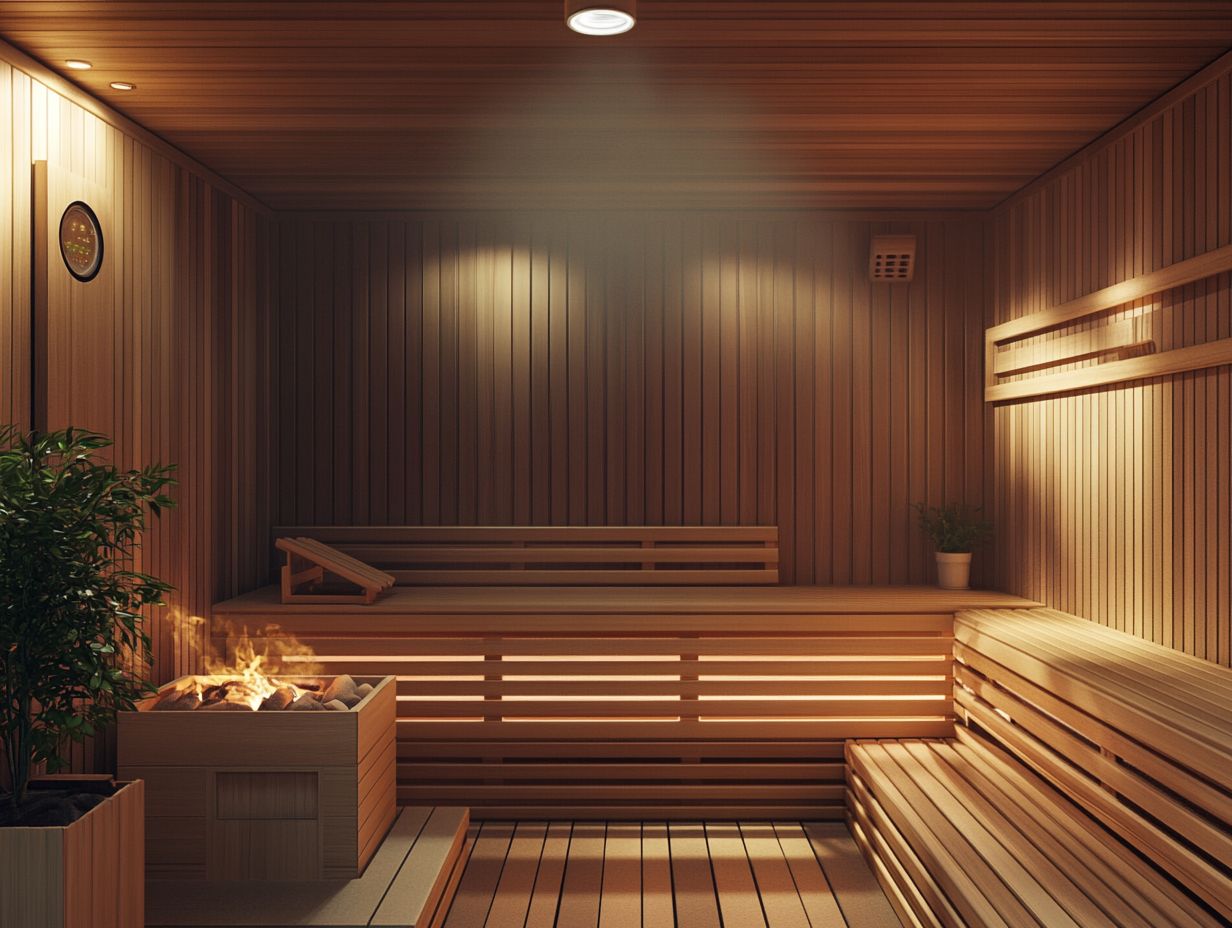
- Regular cleaning and maintenance are crucial for maintaining good air quality in your sauna.
- Proper ventilation is key to preventing mold and mildew growth and ensuring fresh, clean air.
- Using natural cleaning products helps keep your sauna air free of harsh chemicals.
Understanding Sauna Air Quality
Understanding sauna air quality is essential for optimizing your sauna experience. It significantly influences the health benefits you gain from regular sessions.
Proper air quality allows you to enjoy the effects of sweating while minimizing the risks tied to inadequate ventilation and elevated carbon dioxide levels.
Striking the right balance between sufficient air circulation and maintaining a comfortable sauna temperature is vital. This is crucial whether you have an indoor or outdoor sauna.
As a sauna owner, prioritizing clean air enhances your overall wellness journey.
What Affects Air Quality in a Sauna?
Several factors influence the air quality in your sauna, from the construction materials to the efficiency of the air circulation systems.
Poor heat distribution can lead to stale air, and inadequate airflow can elevate carbon dioxide levels, undermining your sauna experience.
The choice of wood is particularly important. Materials like Nordic white spruce, cedar, and Canadian Hemlock not only elevate the aesthetic appeal but also enhance the overall atmosphere and air quality.
Each type of wood has unique properties that affect how moisture and heat interact in the space.
Effective ventilation systems ensure a continuous flow of fresh air, helping you maintain optimal humidity and temperature.
When you combine quality materials with efficient airflow, you create an environment that promotes relaxation and maximizes the therapeutic benefits of your sauna sessions.
The Importance of Good Air Quality
Ensuring good air quality in a sauna is essential for maintaining a pristine environment, which amplifies the myriad health benefits of regular sauna use.
When the steam is of high quality and the air remains clean, it transforms the sauna into a sanctuary that is both enjoyable and safe for every user.
Benefits of Maintaining Clean Air
Maintaining clean air in a sauna offers a wealth of benefits, enhancing your health, improving relaxation, and elevating your overall sauna experience.
When the air is pure, it promotes better oxygenation, essential for rejuvenating both your body and mind during soothing sauna rituals.
This clarity in the air supports optimal respiratory health and encourages deeper meditation and effective stress release.
In Finnish culture, where saunas play a vital role in communal bonding and wellness, the purity of the air greatly enriches these traditional ceremonies.
Clean air aids in achieving the therapeutic effects you seek from sauna sessions, creating an environment that calms the lungs and invigorates the senses.
By prioritizing this aspect, you enhance your experience and pay tribute to the traditions that have celebrated the balance of clean, warm air for centuries.
Start prioritizing the air quality in your sauna today for a rejuvenating experience!
Tips for Maintaining Sauna Air Quality
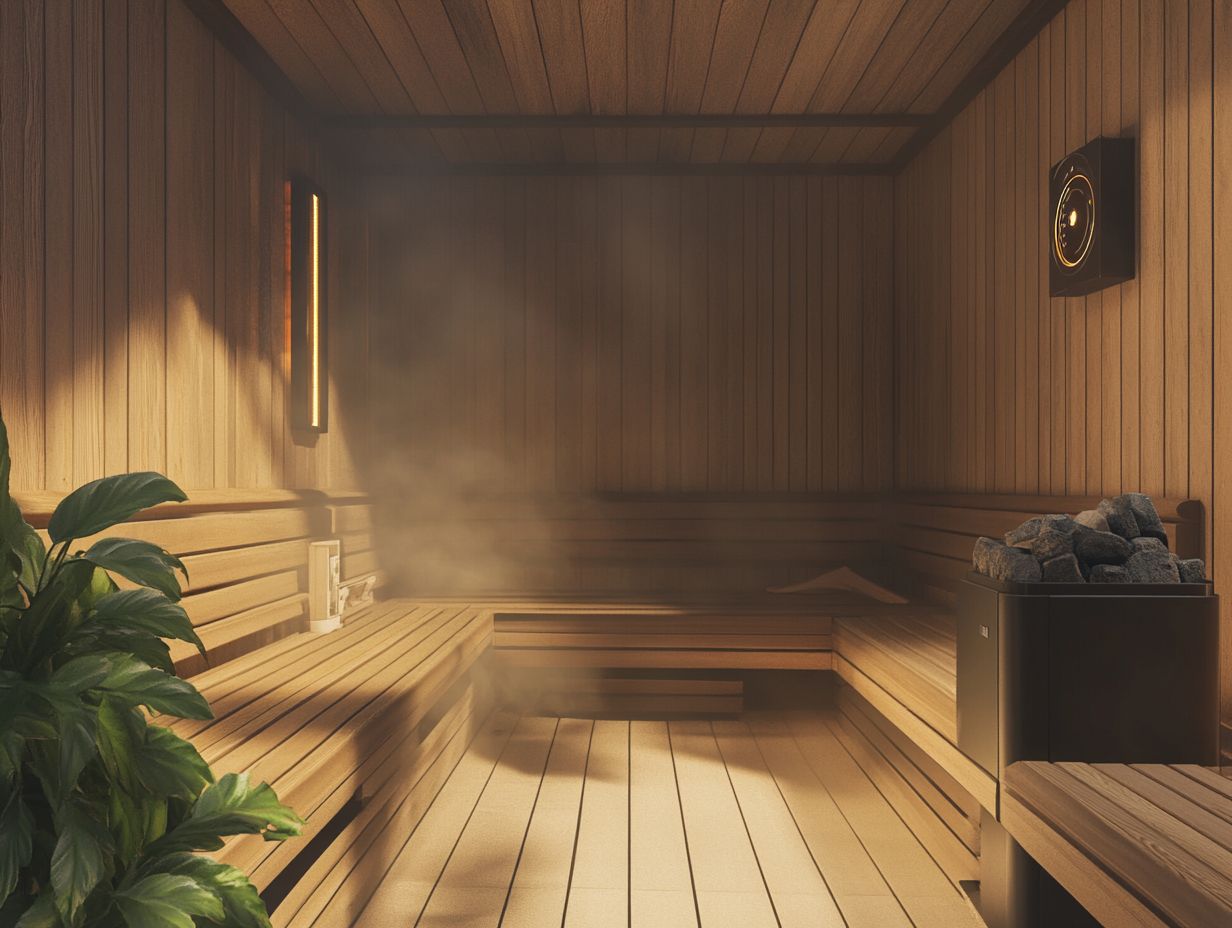
To achieve optimal air quality in your sauna, embracing a few maintenance tips can significantly enhance your experience. These tips foster a clean environment that promotes relaxation and well-being.
Focus on ensuring proper ventilation and efficient air circulation. Regularly check your sauna to elevate user safety and enrich the overall experience, allowing you to fully indulge in its benefits.
Regular Cleaning and Maintenance
Regular cleaning and maintenance are essential for preserving air quality in your sauna. This is especially true for wooden surfaces, which can easily become breeding grounds for bacteria and unpleasant odors.
Implementing effective cleaning methods protects the integrity of your sauna. It also enhances the overall experience for you and your guests, ensuring their health and safety.
For optimal sanitation, use mild, non-abrasive cleaners specifically formulated for wood. Soft cloths or microfiber towels are ideal for wiping down surfaces; they effectively eliminate dirt while preventing scratches and safeguarding the finish.
Regularly checking your sauna is crucial for catching potential issues, such as leaks or wood rot, before they develop into more significant problems. By tackling these concerns early, you can ensure a safe and healthy environment for everyone, ultimately elevating the enjoyment of this serene retreat.
Proper Ventilation
Proper ventilation in a sauna is crucial for maintaining air quality, as it directly affects air circulation and CO2 levels in the space. An effective sauna design features ventilation systems that enable fresh air intake while expelling stale air, fostering a healthier environment.
The positioning of vents is key to optimizing airflow and effectively regulating heat distribution. For example, placing an intake vent near the floor allows cooler air to enter, while an exhaust vent positioned higher helps release warm, stale air.
This creates a natural flow that keeps the sauna comfortably warm without compromising oxygen levels. Depending on the size and intended use of the sauna, you can employ different ventilation systems, such as passive or active options.
Thoughtfully considering these elements helps strike the perfect balance between maintaining desired heat and ensuring a fresh, invigorating experience for users.
Using Natural Cleaning Products
Switching to natural cleaning products makes your sauna a safer, healthier retreat! These eco-friendly solutions effectively tackle bacteria and odors without compromising air quality or the integrity of the sauna materials.
By incorporating items like vinegar, baking soda, and essential oils into your cleaning routine, you transform your sauna into a safer sanctuary for relaxation. For instance, vinegar serves as a potent disinfectant and removes mineral buildup, making it ideal for preserving those wooden benches.
A simple mixture of baking soda and water can work wonders on stubborn stains, ensuring that surfaces remain both attractive and hygienic.
Integrating these natural products into your regular sauna maintenance routine is a breeze. Establish a weekly deep cleaning schedule using these alternatives to keep your sauna free from harsh chemicals.
This thoughtful approach not only promotes a healthier atmosphere for all users but also cultivates peace of mind during each rejuvenating sauna session.
Common Issues and Solutions
Tackle these common air quality concerns in your sauna to ensure a safe and enjoyable experience. By addressing these issues, you can prevent unpleasant odors and the unwanted growth of mold and mildew.
Implementing effective cleaning techniques and proactive maintenance strategies is essential for overcoming these challenges and ensuring a clean, refreshing environment.
Mold and Mildew Prevention
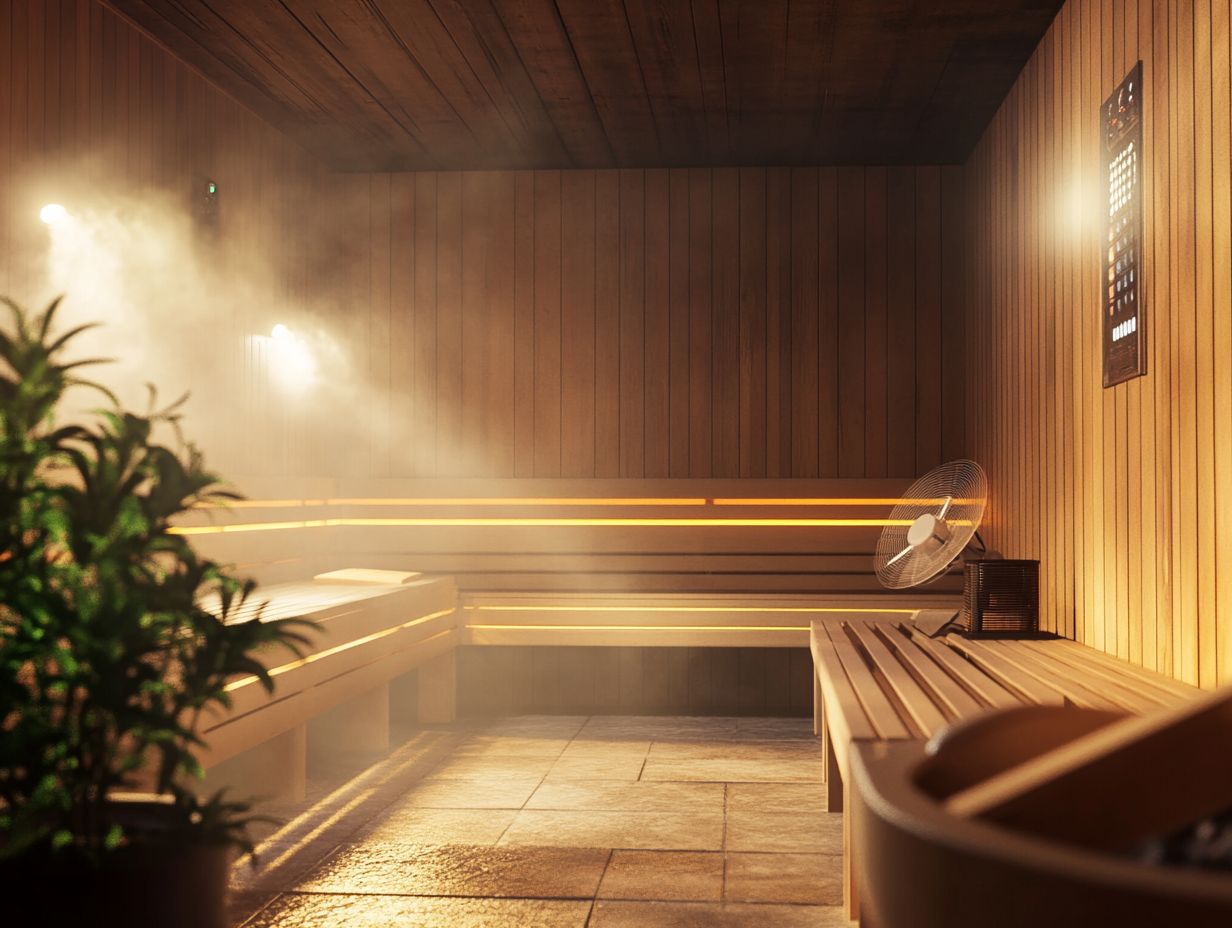
Mold and mildew prevention in your sauna is essential for maintaining optimal air quality and ensuring a safe, enjoyable experience for everyone who enters. By implementing effective cleaning methods and ensuring proper ventilation, you can significantly reduce the risk of mold and mildew growth.
To achieve this, establish regular cleaning routines that utilize non-toxic and biodegradable cleaners specifically formulated for wood surfaces. These cleaners effectively eliminate existing spores without harming the materials, securing a healthier sauna atmosphere. Additionally, be sure to follow guidelines on how to maintain your sauna’s warranty to protect your investment.
It is also important to keep moisture in the air in check ideally between 30% and 50% to discourage mold formation. Consider installing a dehumidifier during quieter times when the sauna isn t in use.
Enhancing air circulation is another key aspect; allowing fresh air to flow through windows or using an exhaust fan will contribute to a drier environment, promoting a healthier atmosphere in your sauna overall.
Dealing with Musty Smells
Don t let musty smells ruin your sauna experience! Tackle them head-on with these effective methods. Addressing the root causes of these odors is essential for maintaining air quality and enhancing your overall sauna experience.
Common sources of musty odors often arise from moisture accumulation, mold growth, and insufficient air circulation. Combat this by establishing your cleaning routine that includes scrubbing surfaces with a vinegar and water solution, which can effectively neutralize unwelcome scents.
Using a dehumidifier will help regulate moisture levels. Proper ventilation through vents or cracking a window will promote airflow and minimize odor buildup.
Regularly check the sauna’s moisture levels and conduct periodic inspections to prevent odors from becoming a persistent nuisance, ensuring a truly enjoyable and refreshing sauna experience.
Removing Stains
Removing stains in a sauna is crucial, not just for aesthetics but also for preserving air quality and ensuring user safety. Use cleaning methods specifically designed for wooden surfaces for the best results.
Opt for eco-friendly cleaning products that are gentle yet effective. Harsh chemicals might release harmful fumes, detracting from the overall experience. Regularly wiping down surfaces after each use can prevent staining. A simple mixture of vinegar and water works wonders as a natural cleaner.
Conducting regular inspections helps you catch any issues early, allowing for timely intervention. This proactive approach keeps the sauna in pristine condition for everyone who enjoys it.
Frequently Asked Questions
-
How often should I clean my sauna to maintain air quality?
It is recommended to clean your sauna at least once a week. If heavily used, cleaning it twice a week may be necessary.
-
What is the best way to clean my sauna for optimal air quality?
The best way to clean your sauna is to first vacuum any debris or dust. Then, wipe down all surfaces with a mixture of water and vinegar. Finally, open all windows and doors for proper ventilation.
-
Can I use scented oils or fragrances in my sauna for a better smell?
No, it is not recommended to use scented oils or fragrances as they can negatively affect air quality. Stick to natural cleaning solutions and avoid artificial scents.
-
How can I prevent mold and mildew from forming in my sauna?
To prevent mold and mildew, keep your sauna as dry as possible by wiping down excess moisture after each use. You can also use a dehumidifier to help control moisture levels.
Ready to enjoy a fresher sauna experience? Start your cleaning routine today!
Is it necessary to have a ventilation system in my sauna?
A good ventilation system is crucial for your sauna! It helps circulate fresh air and removes excess moisture or toxins.
This maintains air quality and prevents health hazards.
Can I use air purifiers in my sauna to improve air quality?
No, using air purifiers in your sauna isn t safe. They can become a fire hazard because of the high heat and humidity.
Instead, rely on natural cleaning methods and proper ventilation to keep the air fresh.

